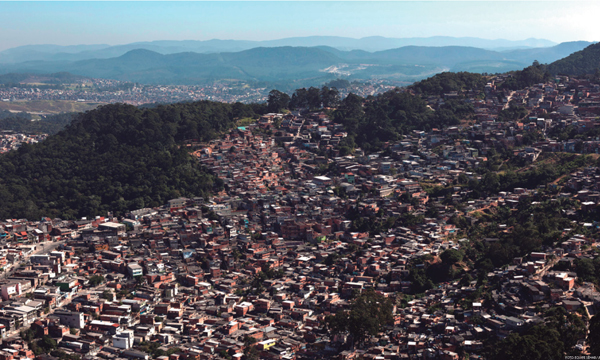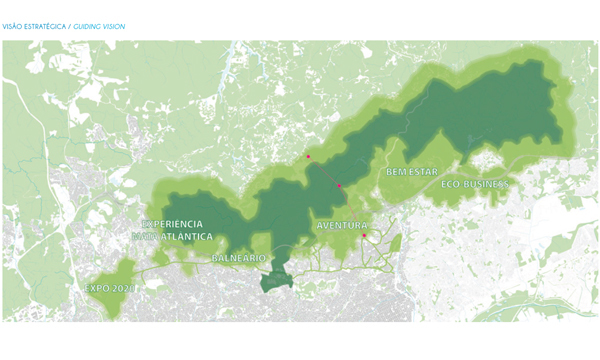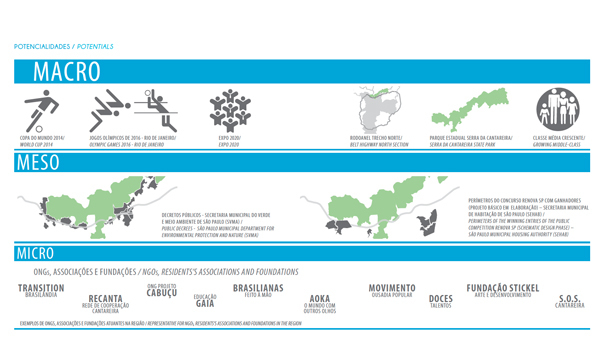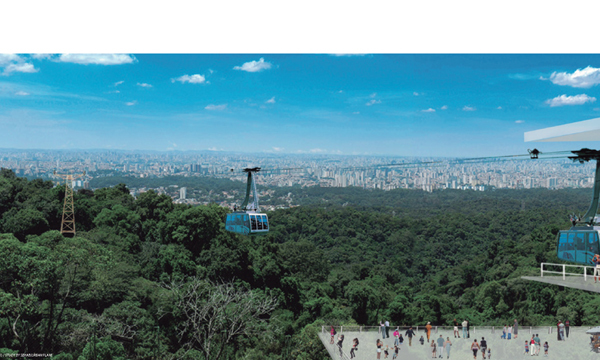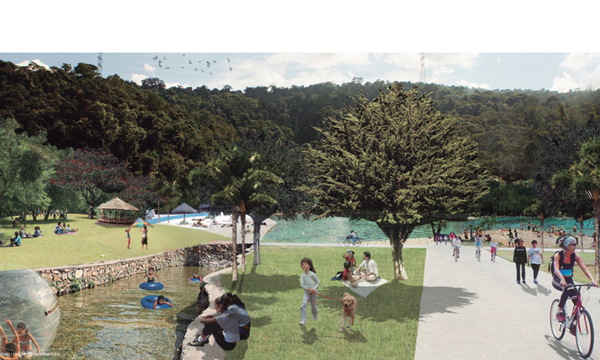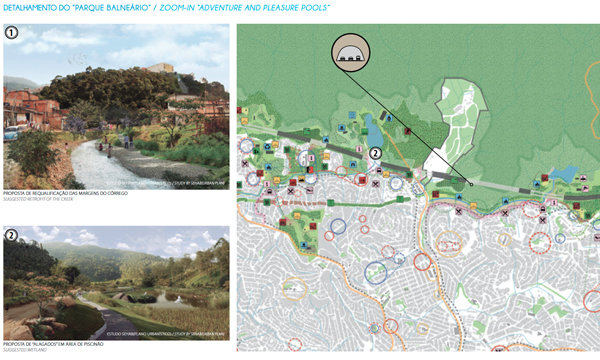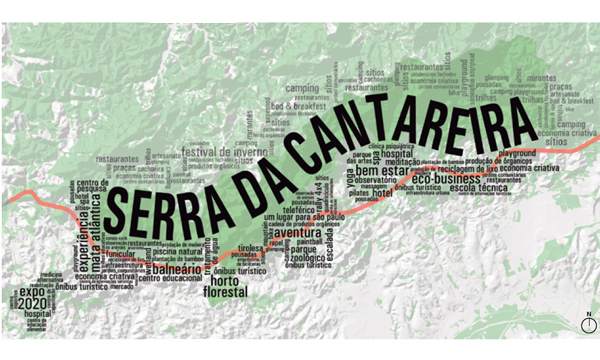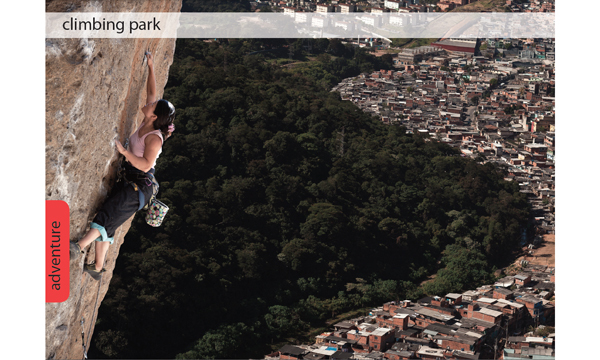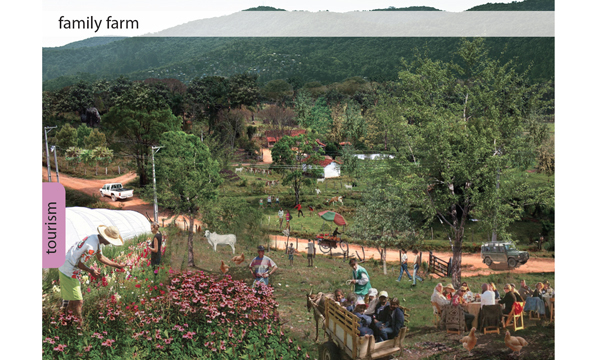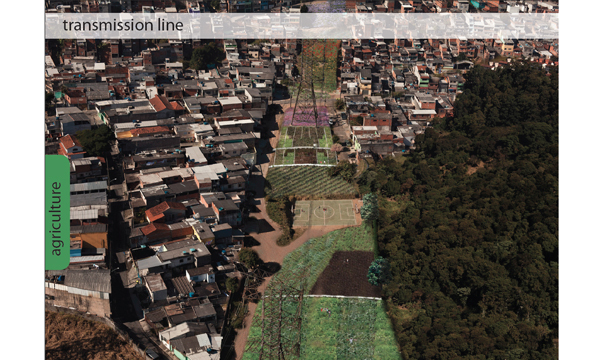Serra da Cantareira
São Paulo, Brazil
- Architetti
- FABULOUS URBAN
- Sede
- São Paulo, Brazil
- Credits
- Sehab: Ricardo Pereira Leite, Secretary | Elisabete França, Vice Secretary
- Urban design and planning team
- Fabienne Hoelzel, program coordinator | Gregory Valente | Pedro Wada | Renata Bruno | Daniela Retz, graphic design with Louis Wangler
- Habi Norte – slum upgrading program
- Maria Cecília Sampaio | Freire Nammur | Elaine Cristina Costa | Luciana Maria Sakate | Maria da Penha | Silva Gomes | Mônica Oliveira |Vieira Cyrillo | Ulisses Sardão | William Martinha | Local population | Local NGOs
- Collaboration
- 5th IABR – Ministry for Infrastructure and the Environment – Fabric, Rotterdam, The Netherlands
The Serra da Cantareira slopes, one of the largest urban rain forests in the world, represent today a conflict zone: Between the protected Atlantic forest and the informal settlements; between the newly constructed belt highway and the existing households that eventually have to be resettled, and between environmentalists and the infrastructural needs of a growing city. And last, but not least, between the interests of a few, the owners of houses in gated communities in close proximity to the Cantareira, and the interests of 20 million people, who are entitled to have access to large and green recreational ares. The region, which includes four different municipalities, is characterized by a huge unemployment rate amongst the population in the informal settlements and by little job offers in the area itself. People have therefor the choice between commuting long distances to work every day or remain without regular salaries. On the other hand, the beauty of the green and hilly landscape and its proximity to the magnificent Atlantic forest Serra da Cantareira is remarkable. The concept of the urban plan for the Serra da Cantareira is simple: It aims to transform the “conflict zone” into an “opportunity zone”. It suggests implementing along the Cantareira slopes a “green buffer zone”, creating jobs and income for the urban poor and offering access of a new giant and diversified leisure area inside the metropolitan region of São Paulo. Since the Atlantic forest is one of the cultural heritages of Brazil and São Paulo, this urban plan also suggests rediscovering the local identity and reconnecting with the own roots. It further considers the fact that many people in the society do not want to ignore the ecological state of our planet any longer, and they would like to maintain a sustainable lifestyle. People want to know where vegetables and fruits on their daily plates come from, in which land they were grown, and under which conditions ranch animals are raised and kept.
Progetti collegati
Rivista
-
Reusing the Olympic Roof
1 day ago
-
The Boulevards of Los Angeles
2 days ago
-
Vessel to Reopen with Safety Netting
2 days ago
-
Swimming Sustainably
2 days ago
